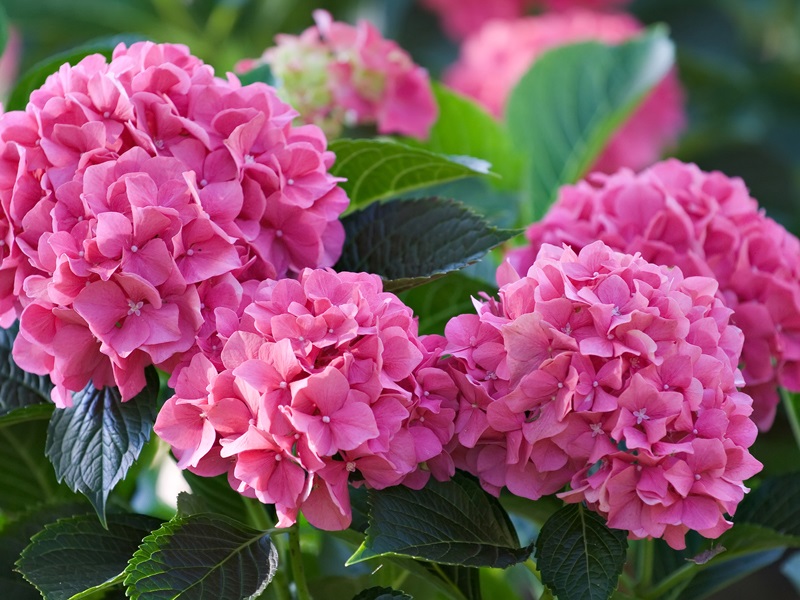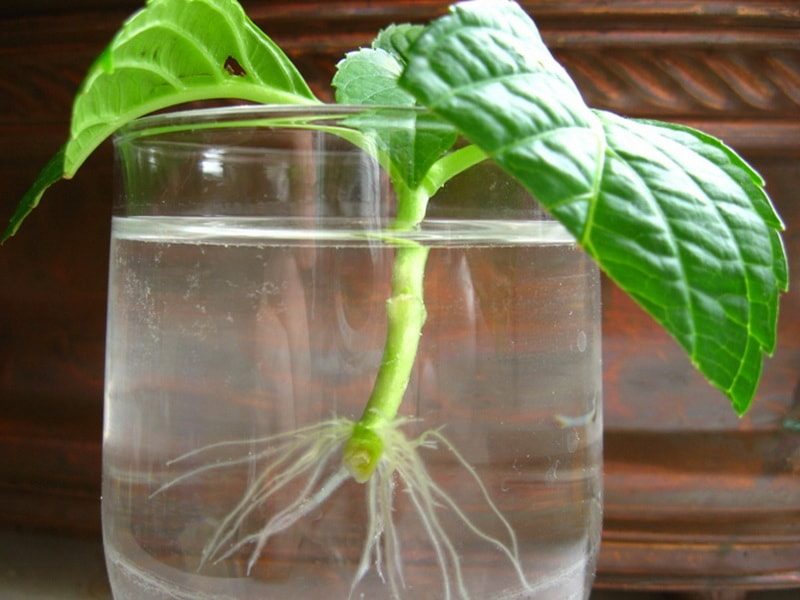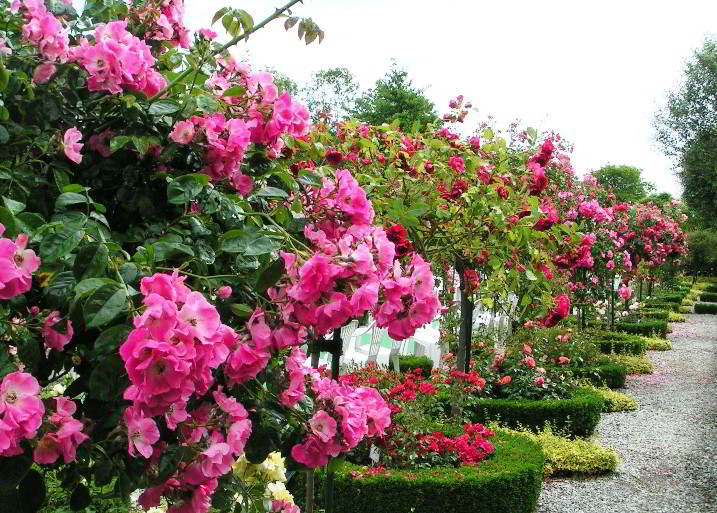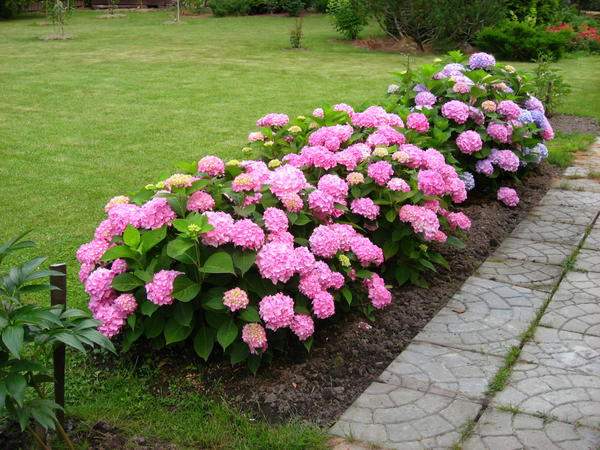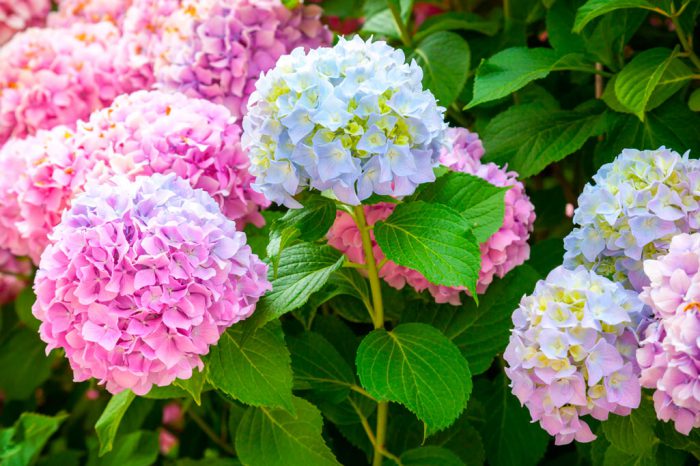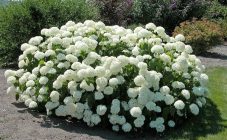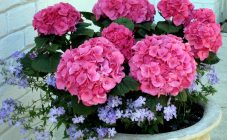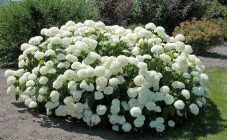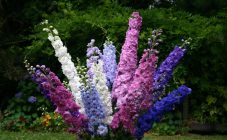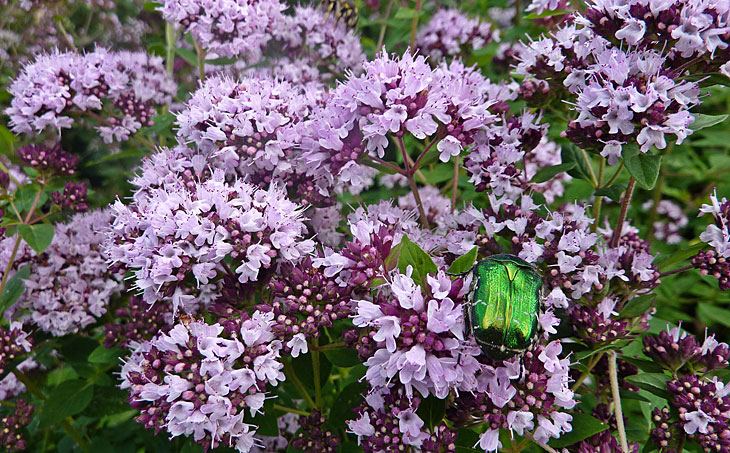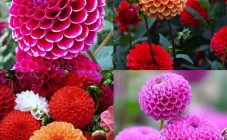Content:
Ornamental shrubs create a unique atmosphere in gardens and parks. When choosing them for landscaping a personal plot, you should pay attention to a plant that is inconspicuous at first glance with wide, large, slightly elongated leaves. A little care - and she will delight everyone with her magnificent flowers until late autumn.
Agrotechnics of culture
The Invincible Spirit tree hydrangea variety is a selection product derived from the Anabel variety at the University of North Carolina. Russian gardeners know it under the name Pink hydrangea.
Like most forms of the genus, it is a deciduous shrub. Basic description and characteristics of the culture:
- the root system is located close to the surface;
- stems are thin, often curved, up to one and a half meters high, grow directly from the roots from the ground;
- leaves are dark green, medium-sized, elliptical in shape with a sharp tip;
- small flowers, up to 2 cm in diameter, collected in inflorescences in the form of a shield up to 25 cm;
- blooms from July to early October;
- aroma is strong, pronounced.
The work of breeders has made it possible to cultivate the Pink Hydrangea outdoors, subject to the rules of planting and care. Basic conditions for growing:
- The soil is loamy, drained, acidic or slightly acidic (pH 4.5-5.5).
- The landing site is light, protected from direct sunlight. Otherwise, the plant loses its decorative appearance. The flowers will become small and faded, and the inflorescences will become loose. And in bright sunlight during the day, the soil will dry quickly.
- Planting time is spring. Warm soil is recommended. If the plant was grown in a container, it can be planted during the entire growing season.
- Watering is plentiful. Hydrangea is a moisture-loving plant.
- Regular fertilization.
- Light loosening of the near-stem area.
- Mandatory shelter if the culture grows in open ground.
Reproduction of culture
Like all species in the genus, Pink hydrangea reproduces by cuttings, layering, and seeds.
Cuttings
Use young, not yet woody tops of the bush with two or three knots of leaves. From the bottom to the trim point, leave 2-3 cm and make a cut at an oblique angle. The leaves of the first node are removed completely, and the rest are cut in half. It is not recommended to remove all the foliage from the cuttings, because photosynthesis must take place in the planting material. In addition, the plant spends less energy on the development of the green mass, and lets them on for rooting. The top of the cutting is also cut off, but at a right angle.
The container for planting is filled with barren soil, you can use sand. The stalk is buried 3-4 cm, sprayed with water and creates the effect of a greenhouse, covering with any kind of coating. Next, they are removed to a place protected from bright light before rooting.
You can use a clear plastic cup for planting to observe root development. As they grow, transfer the seedling to a larger pot.
Reproduction by layering
With this method of reproduction, it is worth considering that the plant must take root before the onset of cold weather.Therefore, the best time for layering is spring and early summer. The soil around the bush is loosened and a depression is made 3-5 cm wide. Before the buds bloom, the lower shoot of the last year's bush is placed in it, sprinkled with earth and fixed so that it does not rise. The top of the branch is left above the ground, tied upright to the support. As the emerging vertical shoots grow, the layering is spudded. By the fall, he has his roots. At this time or in spring, new plants can be separated from the mother bush and assigned to the garden to strengthen the root system.
Seed propagation
Hydrangea seeds are small and numerous. Formed in boxes 1-3 mm in size on inflorescences in the autumn. Sowing is carried out at the same time of the year.
Soil composition for sowing:
- leafy land (4 parts);
- peat (2 parts)
- river sand (1 part).
Landing technique:
- The seed is lowered.
- Sprinkle lightly with planting compound.
- Moistened by spraying.
- Cover with transparent material to create a greenhouse effect.
- They are removed to a non-sunny, warm (14-20 ° C) place before germination.
Seedlings appear in 1-1.5 months. At this moment, you can remove the shelter and put it in a bright place, but not in direct sunlight.
Growing technique:
- at the stage of cotyledonous leaf formation, plants dive;
- when three or four permanent leaves appear (usually in May), the pick is repeated, while the plants are transferred to separate pots of small diameter;
- from the moment of the second pick, they are hardened, taking them out into the fresh air during the day, out of access to drafts and direct sunlight, and in the evening returning them to room conditions.
In winter, seedlings are kept in a cool but bright room. Outdoor conditions are preferable in summer. It is recommended to remove the resulting buds in order to leave strength for the plant to strengthen the root system. The seedlings are kept in the house for 2 years. Then, in the spring, there is a landing in open ground. In areas with a cold climate, the planting period can be postponed to autumn.
Growing Hydrangea from seeds is a time consuming process. Therefore, it is used mainly in species plants and for breeding.
Conditions for planting in open ground
The composition of the soil for planting does not differ significantly from the composition for planting large-leaved and paniculate varieties. For a permanent place of growth of Pink hydrangea, add:
- drainage (broken brick, crushed stone, expanded clay) in 6-8 cm;
- superphosphate (60 g);
- potash fertilizers (20 g);
- nitrogen fertilizers for spring planting (20 g);
- peat (depends on acidity, the lower it is, the greater the proportion);
- humus (8-10 kg) for feeding the seedling.
Culture care
Subject to the few rules of care, the tree-like Hydrangea will delight with its emerald foliage and delightful flowering until late autumn:
- Abundant watering. An adult plant requires 30-50 liters twice a week. The water used must be warm and settled. Otherwise, chlorosis may develop. When mulching with peat, which retains moisture, watering is more rare.
- Regular loosening. At least twice during spring and summer, the near-stem area is loosened to a depth of 3-5 cm. Due to the sensitivity of the root system to damage, loosening should be carried out with caution.
- Pruning faded buds and dried shoots.
Top dressing
To improve the decorative appearance of the plant, feeding should be done at least two times - before and after flowering.
In the period before flowering, for each adult bush you will need:
- 60 g of urea;
- 30 liters of water.
After flowering, the tree hydrangea of the Pink variety is fertilized with any complex fertilizers. In addition, during the summer period, feeding with slurry is permissible.
Flowering plant
In the autumn growing season, the plant buds for future flowering. In the spring, they start to grow. Therefore, it is believed that the culture blooms on the shoots of the current year. Medium-sized flowers (1.5-2 cm) form a thyroid inflorescence up to 20 cm, covering the bush from June to frost. Hydrangea is tender pink - this is how the bush appears at the very beginning of summer, when the flowers are just opening. If the plant only grows green mass, then it is worth revising its preparation for winter, the light regime, feeding methods. The pruning method, planting site and fertilization regime affect the decorative effect of the crop. Also, it does not have the best effect on flowering and planting next to hydrangea plants that have the same superficial root system due to competition for development conditions.
In the autumn, the dried caps of the inflorescences must be cut off so that the thin stems do not break under the weight of snow in winter. You can prune the crop at a height of 3-4 buds in order to achieve correct, abundant and beautiful flowering in summer. Tree hydrangea Pink belongs to the frost-resistant type of plant, so not all gardeners practice its shelter. Young seedlings are still recommended to be sprinkled with a layer of earth for the winter period or to make another protective coating.
